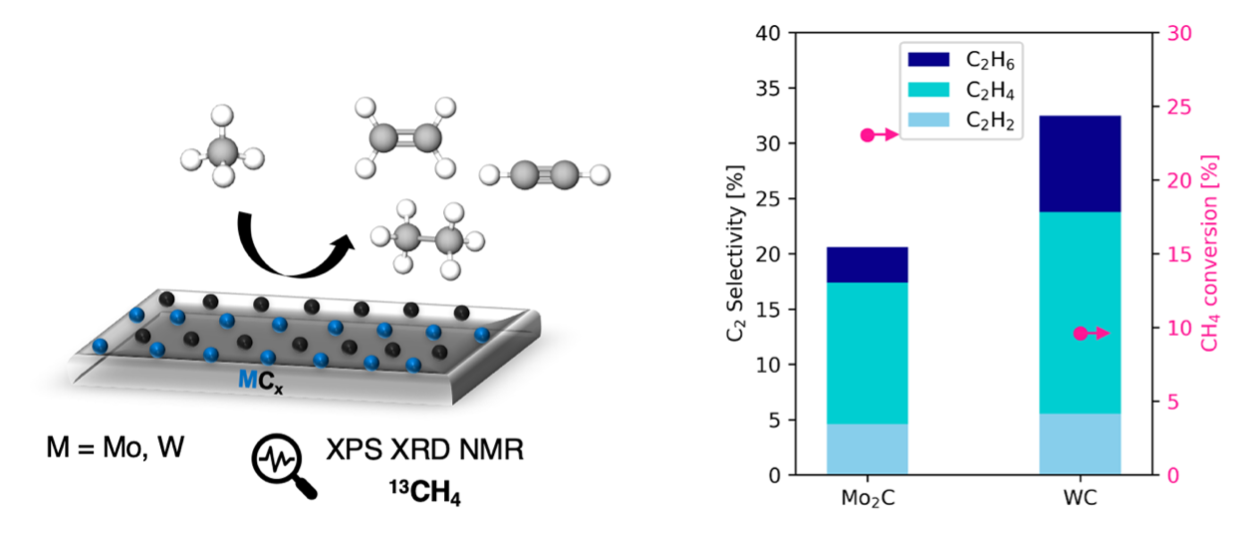Non-oxidative Coupling of Methane with Transition-Metal Carbides: Mechanistic Revelation of the Role of Carbidic Carbon
Non-oxidative methane coupling to higher hydrocarbons is gaining momentum.[1] In this study, the reactivity of molybdenum and tungsten carbides towards non-oxidative methane coupling is investigated. These transition-metal carbides display good selectivities towards C2Hx (x=2,4,6). While methane coupling mechanisms are still debated, information regarding active site structure and initiation mechanism for C2Hx formation are scarce, and metal carbides are often postulated as the in-situ formed active site.
In order to understand the role played by carbidic carbon, we monitor both the gas phase composition and the bulk carbide by comparing pristine and spent catalyst after reaction with 13C-labelled methane at 1100 °C with various characterization techniques (XPS, solid-state NMR, pXRD). During this reaction, Mo2C shows a stable selectivity over time on stream, while a loss of selectivity is observed for WC. XPS analyses indicate a partial reduction of WC to W(0) for the spent catalyst, pointing towards C depletion of the WC matrix over the course of the reaction, while no major changes are observed for Mo2C. In parallel, carbon-exchange is observed between the gas phase and the metal carbide, as evidenced by the incorporation of carbidic carbon in the C2Hx products. Carbon diffusion coefficients were calculated elucidating the different extent of C mobility for molybdenum and tungsten carbide. Furthermore, 13C enrichment of spent Mo2C and WC is evidenced by 13C solid-state NMR with intense NMR signals at 274 and 307 ppm for Mo and W carbides, respectively. Overall, the presence of a significant amount of non-labelled isotopomer among C2 products indicates a Mars-van-Krevelen-type mechanism with participation of the bulk carbon sites (in place of oxygen).

Left: Non-oxidative methane coupling to C2Hx products over Mo2C and WC. (x=2,4,6). Right: Selectivity distribution for C2Hx species and CH4 conversion at 1100 °C and 0.1 atm methane partial pressure over Mo2C and WC.